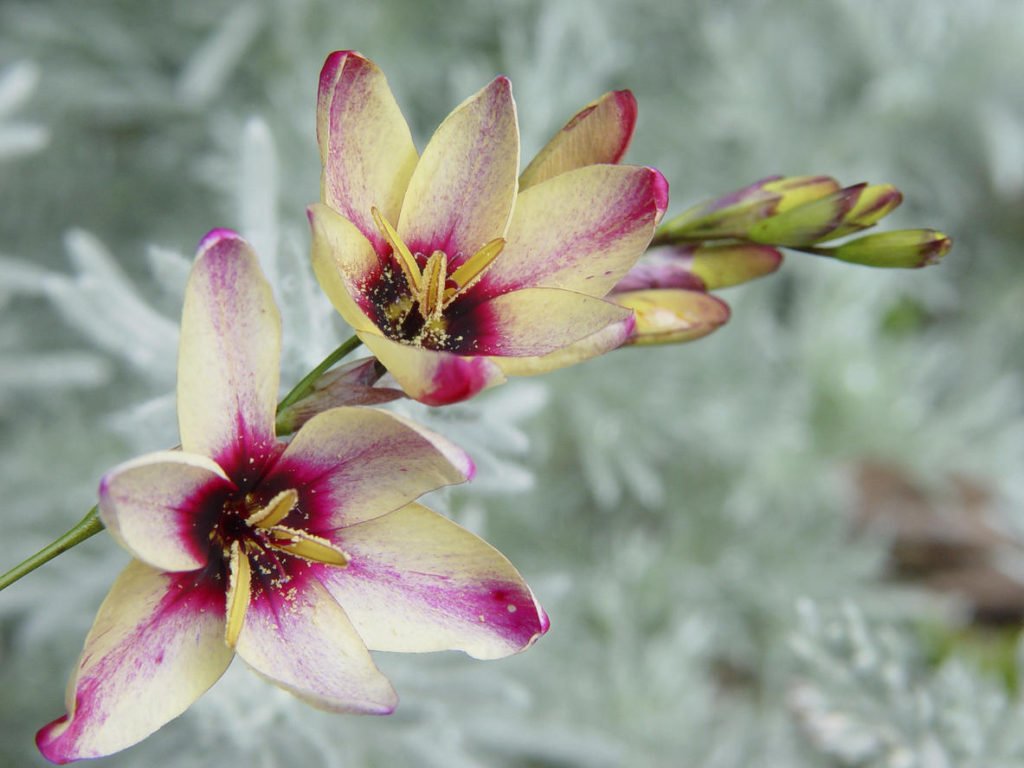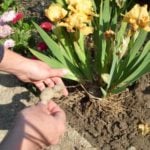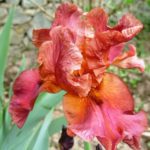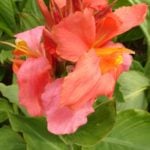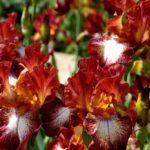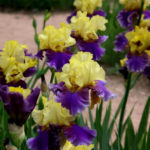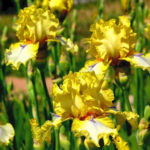Today, Ixia, an ornamental perennial native to South Africa, takes to the podium. Have you noticed that most exotic plants come from the tropics? “Jungle Fever” is gaining momentum, and it’s no surprise. Fragrant tropical flowers relieve us from the routine of everyday life, allow us to dream and think about the beauty of nature… But no one is left without work, because it requires unflagging attention and care, which pays off handsomely when we see it, modest, exotic, worthy of the royal gardens.
The low (from 30 to 70 cm/1-2.3 ft) bulbous tropicana belongs to the rainbow family. And in its leafless stems are spike-shaped inflorescences with flowers in the form of symmetrical stars, shining with all the colors of the rainbow (depending on the variety).
The flowers are framed by two rows of succulent sword-shaped leaves growing straight from the dogwood. Ixia blooms in late spring or early summer. Blooms briefly (3-4 weeks), but abundantly. During flowering, it “explodes” with bright fireworks, starry flowers are fragrant with an exquisite aroma. At night, the flowers are closed – they fall asleep, so that in the morning, after the first dew, they will again please us with their charming tenderness.
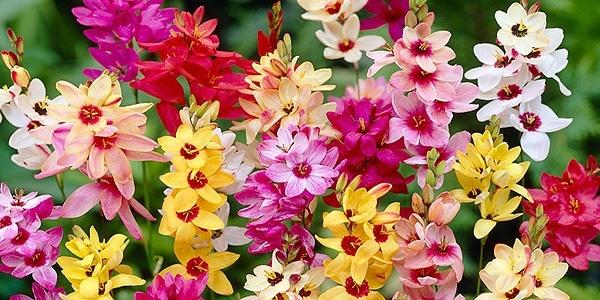
As a true tropicana, Ixia is demanding of light, water, and quite capricious. If there is a lack of sunlight, it can dry up, so your responsibility is related to the choice of his place of residence. The ideal solution for planting Ixia will be open sunny glades, located away from the garden trees.
In landscape design, Ixia is planted as a single group. It looks great in rock gardens, pots and rockeries. Star tropikanka flower beds have particularly beautiful edges, where they form a beautiful border for the entire flower arrangement.
Planting Ixia
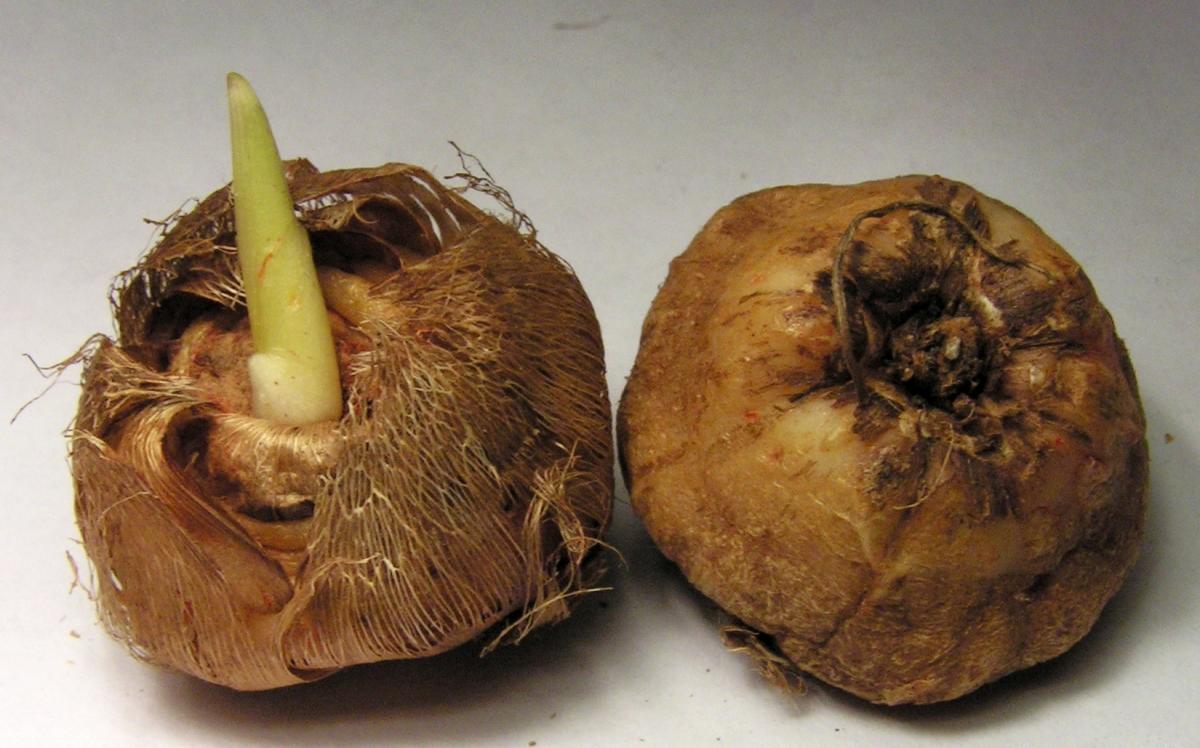
The Star tropicana loves fertile, well-drained soil. The site selected for planting ixia is fertilized with humus or rotted manure in the ratio of 1 bucket per 1 square meter of soil. Per 1 sq. m add 50-70 g (1.8-2.5 oz) of superphosphate, 20 g (0.7 oz) of magnesium and 200-300 g (7-10.6 oz) of wood ash. If the soil is heavy, mix a bucket of river sand for each square meter.
Ixia can be propagated by dividing corms, since its roots have several (root buds). This bulbotuber is cut into pieces so that each has a kidney (or better – several) and a piece of tuber with the rudiments of the roots. Then the slices are sprinkled with ash. Holes for planting divisions (or ready-bought globallogic) should be deepened by 4-5 cm (1.6-2 in), keeping the distance between them from 3 to 6 cm (1.2-2.4 in), depending on the plant variety.
Planting by dividing corms is carried out only in the spring, since the tender root buds of the divisions are not able to survive even a warm southern winter. After spring planting of ixia nodules, the ground is slightly mulched: 2-3 cm (0.8-1.2 in), no more. You do not need to water immediately, the first watering is done with warm water 15-18 days after planting. By then, the Tropicana star will have hatched its first shoots. But keep in mind that during the reproduction of ixia, the tuber branch will only bloom for the 2nd or 3rd year after planting.
Care for Ixia
If you did everything right by planting Ixia in the fertile, fertiliser-rich soil on the sunny side of your garden, then all the subsequent care will not be particularly difficult. During budding and flowering, it should be abundantly watered with warm water, and on dry days sprayed with a spray gun, because it loves moisture and will reciprocate your care and love.
If necessary, remove the fallen leaves and flowers, making room for new ones. In autumn, the aboveground part of the plant is cut off and either the tubers are dug out for storage, or left to winter in the soil, carefully “wrapped” with a layer of soil.
The types of Ixia
Quite often, gardeners planted a mixture of different varieties of Ixia to create rainbow compositions. And some people like certain types of any one color. Beautiful South Africa evokes a wild flight of imagination, and no matter how you plant, everything will look great. In general, there are more than 20 types of Ixia in nature, as well as many hybrids and varieties, but the most favorite of our gardeners are the following.
- Hymenocallis festalis
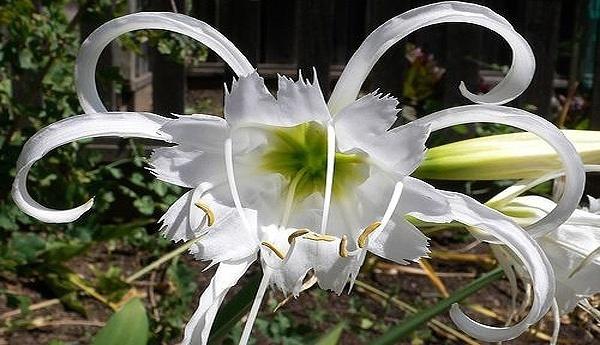
Hymenocallis festalis Ixia is incredibly decorative, as you can see in the photo. Its snow-white flowers with curved petals are arranged in spike-shaped inflorescences up to 70 cm (2.3 ft) high. This type of ixia has a tart sweet aroma that attracts a huge number of butterflies. When such a miracle blooms in the garden, it becomes like a fairy tale.
- Ixia viridiflora
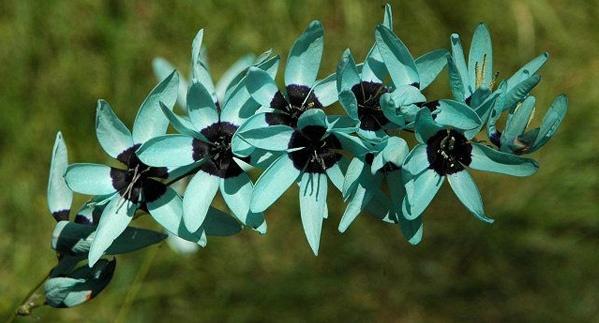
Ixia viridiflora has small star-shaped flowers of a flat pale greenish hue. Against the background of a dark, almost black throat, the petals of her flowers look vulnerable and touching. Blooms in early June, lush spike-shaped inflorescences up to 50 cm (1.6 ft) high.
- Ixia hybrida
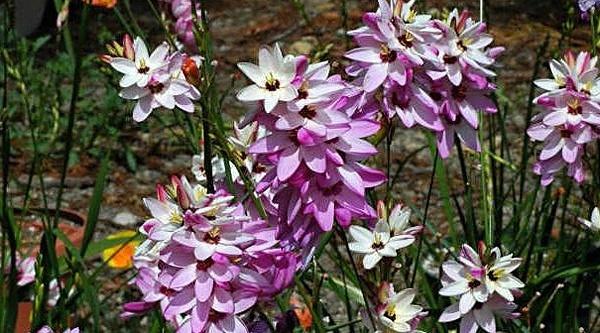
Ixia hybrida is represented by a number of beautiful varieties with inflorescences of cream, yellow, pink, white, light purple and blue-white colors. Growth in the range of 35-50 cm (1.1-1.6 ft), depending on the variety.
- Ixia maculata
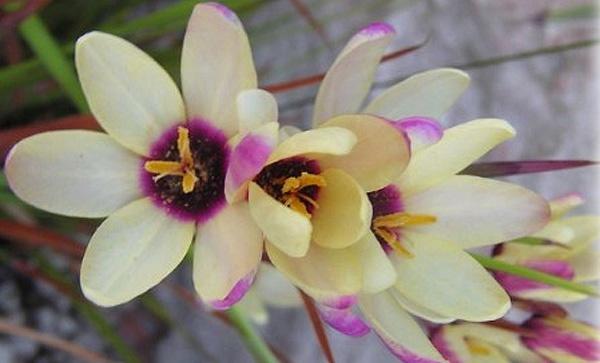
Ixia maculata, up to 50 cm (1.6 ft) tall, has wide-open flowers with rounded petals. Against the background of the dark fringed light neck, the variegated petals of Ixia look very exotic. Its lanceolate juicy leaves grow profusely, gracefully framing the peduncle.
- Ixia orange
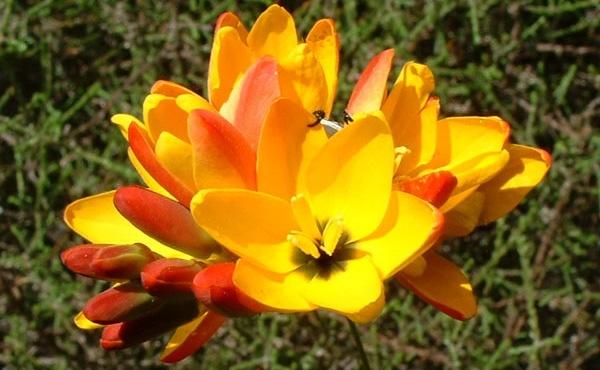
Ixia orange is a dwarf plant species and does not exceed 20 cm (7.9 in), blooms very profusely with orange flowers with dark red in the center.
Here are beautiful stars, plants that you can grow in your country house. By the way, the word Ixia (ixios-bird glue) is of Greek origin, because of the stickiness of the plant’s juice. In the natural conditions of tropical Africa the sticky juice of Ixia brings many inconveniences to Hummingbirds who love these flowers for their astringent taste
